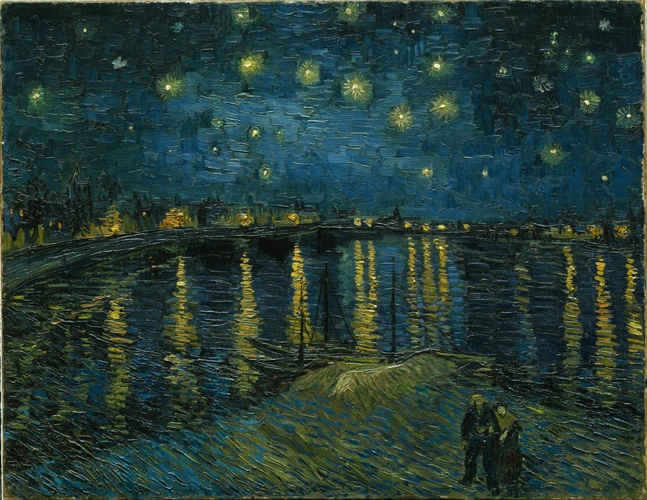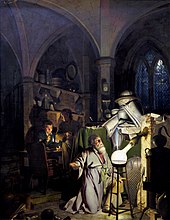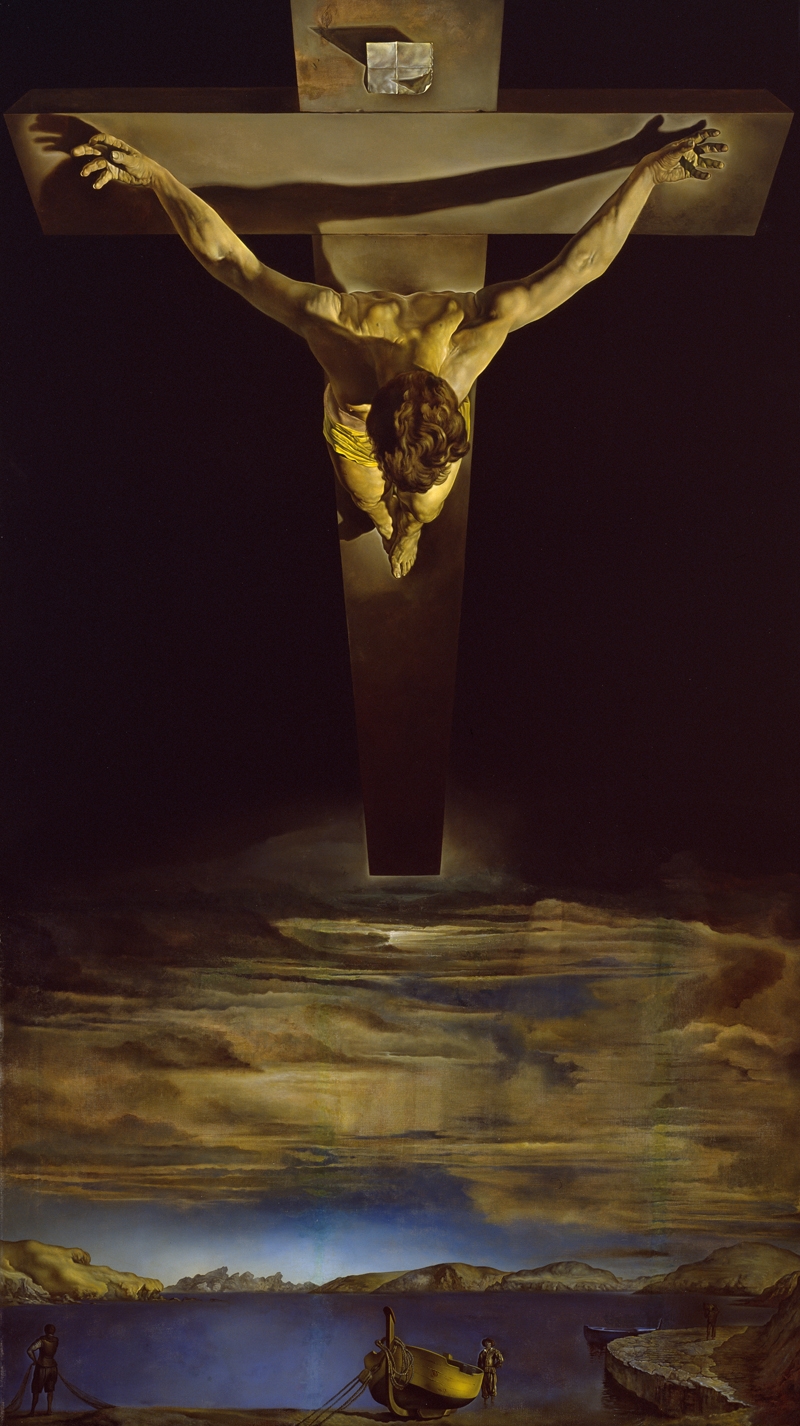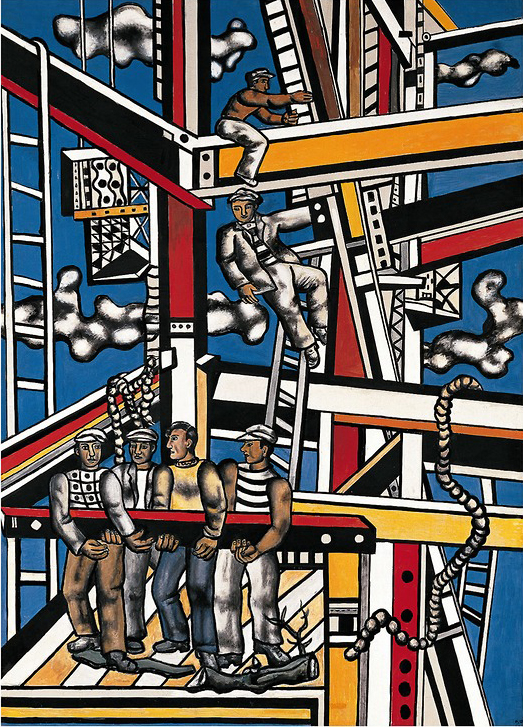The Use of Symbols in Art and Their Meaning
Introduction
Art is a form of human expression that transcends linguistic and cultural barriers. An essential component of art is the use of symbols, which are visual or conceptual elements loaded with meaning. In this article, we will explore in depth the use of symbols in art, their meaning, and how artists incorporate them into their works to communicate ideas and emotions.
Understanding Symbols in Art
History of artistic symbols
Symbols in art have a long history, dating back to ancient times. Ancient civilizations used symbols to represent deities, abstract concepts, or historical events. Egyptian hieroglyphs are a famous example.
Meaning of symbols
Each symbol in art has its own meaning which can vary depending on the cultural context and the artist's interpretation. For example, the dove is often used as a symbol of peace, while the apple can symbolize temptation or knowledge.
How artists use symbols
Artists use symbols intentionally to communicate subtle messages to their audiences. This can be done through composition, colors, the juxtaposition of symbols, or even the use of universally recognized symbols.
Interpretation of symbols
Symbol versatility
Symbols are versatile and can be interpreted in different ways. This allows the audience to actively engage with the art by giving personal meaning to the symbols.
The importance of research
To fully understand symbols in art, it is essential to conduct in-depth research into the cultural and artistic context in which they are used.
Here is a top 10 of the most famous art symbols with their meanings:
- Heart - Universal symbol of love and affection.
- Star - Often associated with guidance, direction, and fame.
- Cross – Represents religious faith, especially Christianity.
- Moon - Symbol of femininity, mystery and the cycle of life.
- Sun - Evokes light, warmth, life, and vitality.
- Lightning Bolt – Represents energy, sudden inspiration and power.
- Flower - Symbolizes beauty, fragility, and nature.
- Bird - Embodies freedom, aspiration, and soul.
- Tree - Symbol of growth, stability, and connection to the earth.
- Butterfly - Represents transformation, metamorphosis, and fleeting beauty.
These symbols are widely recognized across different cultures and have deep meanings that make them popular in art, literature, religion and other areas of human life.
The different types of symbols in art
Cultural symbols
Some symbols are specific to a given culture. For example, the dragon is a symbol of luck in China, but can be associated with fear in other cultures.
Religious symbols
Religious symbols, such as the Christian cross, are ubiquitous in religious art and express faith and spirituality.
Political symbols
Artists can use symbols to comment on political and social issues. The raised fist is a widely recognized symbol of protest.
Personal symbols
Some artists develop their own personal symbols, which become signatures of their work. This creates a unique connection between the artist and their audience.
here is a list of 50 symbols, their meanings, and some examples of works of art associated with each of them:
| Symbol | Meaning | Associated Works of Art |
|---|---|---|
| Cross | Religious faith |
© Glasgow CityCouncil “The Crucifixion of Jesus” by Salvador Dalí |
| Star | the mysteries of the universe, the sky, the night, the truth, and the link between God and Men |
 Vincent Van Gogh
Starry Night - 1888
Oil on canvas
© Orsay Museum, Dist. RMN-Grand Palais / Patrice Schmidt
|
| Moon | Femininity, mystery | “Two Men Gazing at the Moon” by Caspar David Friedrich |
| Sun | Light, heat |
 Edouard Manet
Boats at sea, setting sun
In 1868
Painting, oil on canvas
H. 42.0; L. 94.0 cm.
Work found in Germany after the Second World War and entrusted to the custody of national museums in 1951
© RMN-Grand Palais (Musée d’Orsay) / NMR-GP image
|
| Flash | Energy, inspiration | “The Birth of Venus” by Sandro Botticelli |
| Fire | Passion, transformation |
 “The Kiss” by Gustav Klimt |
| Water | Life, purification | “Ophelia” by John Everett Millais |
| TREE | Growth, stability |
 “The Sunflowers” by Vincent van Gogh
|
| Flower | Beauty, fragility | “The Water Lilies” by Claude Monet |
| Bird | Freedom, aspiration | “The Man with the Bird” by Joan Miró |
| Fish | Spirituality, abundance |
|
| Butterfly | Transformation, metamorphosis | “Butterflies” by Damien Hirst |
| Snake | Revival, danger | “The Serpent” by Marc Chagall |
| Cat | Independence, mystery | “The Black Cat” by Théophile Steinlen |
| Dog | Loyalty, friendship | “The Picture of a Dog” by Thomas Gainsborough |
| Lion | Force courage | “The Lion of Lucerne Statue” by Bertel Thorvaldsen |
| Eagle | vision, power | “Eagle” by Albrecht Dürer |
| Dove | Peace, harmony |
“The Dove of Peace” by Pablo Picasso |
| Anchor | Stability, security | “Anchor” by Piet Mondrian |
| Sword | Protection, power | “Excalibur” by Frank Frazetta |
| Shield | Defense, protection | “The Shield of Achilles” by James Barry |
| Key | Access, opportunity | “The Code” by René Magritte |
| Mountain | Challenge, obstacle |
|
| Bridge | Connection, passage | “The Bridge to Europe” by Gustave Caillebotte |
| Door | Passage, opportunity | “Brandenburg Gate” by Carl Gotthard Langhans |
| Clepsydra | Time, flow | “The Perception of Memory” by Salvador Dalí |
| Clock | Time, cycle | “The Soft Clock” by Salvador Dalí |
| hourglass | Time passing |
 Philip of Champagne, Vanity, or Allegory of Human Life , 1644 Philip of Champagne, Vanity, or Allegory of Human Life , 1644oil on wood, 28 cm x 37 cm, Tessé museum, Le Mans |
| Feather | Lightness, creativity | Still life with book, papers and inkwell. 1876 · François Bonvin |
| Skull | Death, mortality | “Still life with skull” by Philippe de Champaigne |
| Mask | Concealment, role | Inuit mask - Quaie Branly |
| Crown | Royalty, power, pain | “Self-portrait with the crown of thorns and hummingbird ” by Frida Kahlo |
| Ladder | Progress, ascension |
Fernand LÉGER , The builders , final state, 1950. Oil on canvas, Musée National Fernand LÉGER, Biot, France |
| World | Globalization, universe | “The Terrestrial Globe” by Vincenzo Coronelli |
| Crescent moon | Growth, renewal | “Growth” by Isamu Noguchi |
| Shooting star | Wishes, luck | “The Perseids” by Joan Miro |
| Music note | Harmony, melody | “Music” by Fernand Léger |
| Caduceus | Medicine, healing | Medicine emblem |
| Skull | Danger, warning | “Skull” by Jean-Michel Basquiat |
| Scissors | Cutting, separation | |
| Rain | Purification, fertility |
Gustave Caillebotte, Rue de Paris, rainy weather, study. 1877 Marmottan-Monet Museum, Paris |
| Rainbow | Hope, diversity | “The Rainbow” by John Constable |
| Nut | Fixation, resistance | “The Nut” by Marcel Duchamp |
| Hammer | Construction, destruction | “The Masterless Hammer” by Joan Miro |
| Broken Heart | Pain, sorrow | Works of Augustus Edwin Mulready |
| Candle | Light, memory |
 Georges de La tour - The Magdalen at the Night Light, 1640, Louvre Museum, Paris |
| Chessboard | Strategy, competition | “The Chess Game” by Marcel Duchamp |
| Flag | National identity | “The American Flag” by Jasper Johns |
| Swastika | Woe, hatred | “Inverted Swastika” by Man Ray |
| Pentagram | Magic, mystery | -- |
| Hands joined | Prayer, respect |
Sebastiano Conca - Virgin in Prayer
|
| Naked | Vulnerability, freedom | “Lunch on the Grass” by Édouard Manet |
| Guitar | Expression, passion | “The Guitar” by Pablo Picasso |
| Ribbon | Bonding, attachment | "The Ribbon" by Edvard Munch |
| Ring | Eternity, commitment | “The Ring” by Paul Klee |
| Lock | Secret, mystery | “The Lock” by René Magritte |
| Puzzle piece | Complement, consistency | “The Puzzle” by Georges Braque |
| Drum | Rhythm, energy | “The Drum” by Kazimir Malevich |
| Bow - Arrow | Accuracy, target | “The Archer” by Alberto Giacometti |
| Horseshoe | Luck, protection | “The Horseshoe” by Édouard Manet |
| Genius | Creativity, inspiration | “The Man with the Pipe” by Paul Cézanne |
| Seal | Authenticity, authority | “The Seal of Solomon” by Honoré Daumier |
| Microphone | Expression, voice | “The Microphone” by Alexander Calder |
| Paper | Communication, writing | “The Book” by Joan Miró |
| Tablet | Technology, communication | “The Tablet” by Roy Lichtenstein |
| Padlock | Security, privacy | |
| Backpack | Adventure, travel | Photography |
| Bulb | Idea, inspiration | present in Pop art |
| Test tube | Science, discovery |
 The Alchemist discovering phosphorus The Alchemist discovering phosphorusJoseph Wright of Derby |
| Hands clapping | Applause, approval | "The Crowd" - Eugene Delacroix |
| Thumbs up | Approval, success | “The Thumb” by César Baldaccini |
| Sword | War, power |
 “Justice” by Pierre Subleyras |
| Laurel wreath | Victory, honor | “Napoleon Bonaparte” by Jean-Auguste-Dominique Ingres |
| Candle lit | Hope, memory | “The Burning Candle” by Gerhard Richter |
| Speech bubble | Conversation, communication | “Conversation” by Fernand Léger |
| Seal of approval | Validation, acceptance | “Approval” by Roy Lichtenstein |
| Car | Mobility, travel | “The Car” by Fernand Léger |
| Crescent moon and star | Islam, faith | "The Crescent Moon and the Star" (Islamic symbol) |
| Rope | Connection, union | Jean-Michel Basquiat |
| Cup of coffee | Awakening, comfort | “The Cup of Coffee” by Jean Metzinger |
| Compass | Guidance, direction | “The Compass” by Leonardo da Vinci |
| Tickle | Fun, laugh | “Portrait of a Scoundrel” by Jean-Michel Basquiat |
| Brush | Creativity, art | “The Paintbrush” by Juan Gris |
| Gun | Violence, danger | “The Gun” by Roy Lichtenstein |
| Coiled snake | Eternity, renewal | “The Serpent” by Marc Chagall |
| Clovers and four-leaf clover | Luck, prosperity | "The King of Clubs" by Albrecht Dürer |
| Campfire | Warmth, gathering | “The Camp Fire” by Henri Rousseau |
| Smoke | Mystery, concealment |

© National Portrait Gallery, London. Photo credit: National Portrait Gallery, London "Harold Wilson" by Ruskin Spear |
| Veil | Mystery, revelation | “The Veil” by Max Ernst |
This list gives you an overview of different symbols, their meanings, and examples of artwork that incorporates them. Each of these symbols can be interpreted in a unique way depending on the context and the artist.
Symbols in famous artistic movements
Surrealism
The surrealist movement used symbols to explore the world of the unconscious. Salvador Dalí, for example, incorporated soft watches into his works to represent the fluidity of time.
Abstract art
Abstract art pushes the boundaries of interpretation by using abstract shapes and colors as symbols of emotions and ideas.
Conclusion
Symbols in art play an essential role in communicating ideas, emotions, and cultural messages. Their versatility and power of expression make them powerful tools for artists. Understanding the meaning of symbols and their use in various artistic movements enriches our experience of art.
After this in-depth exploration, you may be curious to learn more about art and its many facets. We've put together some frequently asked questions to satisfy your curiosity.
FAQs
1. What are some universally recognized artistic symbols?
Examples of universally recognized symbols include the heart (love), the dove (peace), and the crown (authority).
2. How can I interpret an artistic symbol?
The interpretation of an artistic symbol depends on the context, your own experience, and the cultural meaning associated with the symbol. Do research for in-depth understanding.
3. Do contemporary artists still use symbols in their work?
Yes, many contemporary artists incorporate symbols into their works to explore complex ideas and current issues.
4. How can symbols enrich the artistic experience?
Symbols add layers of meaning and emotion to a work of art, inviting the audience to engage more deeply in the interpretation.
5. Are there online resources to learn about artistic symbols?
Yes, many online resources offer detailed information about artistic symbols, their history, and their meaning.



























